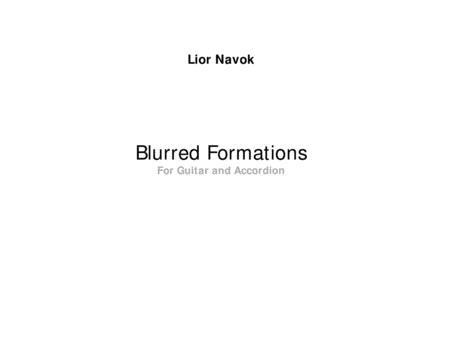Instrumental Duet Accordion,Guitar,Instrumental Duet - Level 5 - Digital Download SKU: A0.976040 Composed by Lior Navok. 20th Century,Contemporary. Score and parts. 25 pages. Lior Navok Music #4725305. Published by Lior Navok Music (A0.976040). BLURRED FORMATIONS - for Concert Accordion and Classical Guitar (2002) DURATION: 10 Minutes PROGRAM NOTES: The composer writes about his work: While composing Blurred Formations, I was occupied with the ideas of ever-changing spots of color, constantly-moving ocean plants, sea anemones and fish shoals. Usually, these visual images fascinate our eyes, as their continuous formation is truly harmonious and somewhat mysterious. Yet, the endless formations are not necessarily easy to catch or view sharply. These blurred formations in their visual sense, intrigued me to search for their sonic equivalence. Through ever-changing clusters, vague arpeggiations and occasional chromatic melody, I tried to translate my images into sound. In some cases the blur is thick and dark, and in some cases thin, light and spacious. Both the accordion and guitar contribute to the clearness and the blurriness of the formations, each with its own unique timbre. INFO:Item: Full Score Format: Edition: 2nd Edition Copyright: Lior Navok Publisher: Lior Navok Music Pages: 25Ink: Black & White Paper Size: DIN A4 / Letter.
